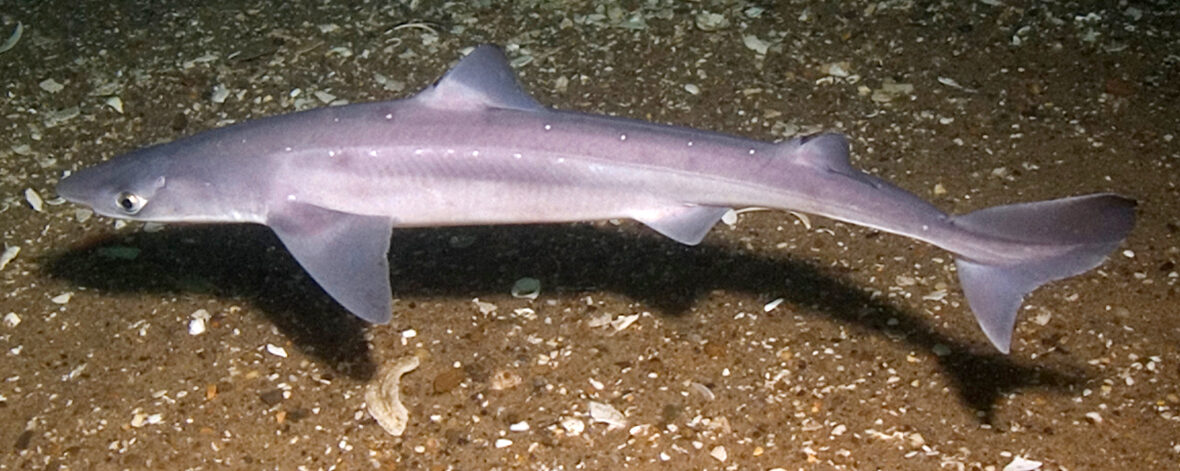
The spurdog shark, aka spiny dogfish, is a smaller species of shark that hails from the temperate and subtropical waters of the Atlantic, Indian, and Pacific Oceans. They can be found at depths of up to 3,281 feet. Due to the threat of overfishing and finning (the horrible practice of catching sharks, cutting off their fins, then throwing them back into the ocean to die) these sharks are listed as Vulnerable by the IUCN. Their numbers are also decreasing. They get the name dogfish due to their habit of hunting in packs.
First the Stats…
Scientific name: Squalus acanthias
Weight: Up to 21.6 lbs.
Length: Up to 49 inches
Lifespan: Up to 75 years
Now on to the Facts!
1.) Due to their large eyes, they can easily detect prey in the dark environment in which they live.
2.) They derive their namesake due to the large, sharp spine at the front of each of their 2 dorsal fins.
3.) These sharks are demersal (spend all or part of their time on or near the bottom of the ocean floor).
4.) Spurdogs are migratory sharks that travel in large shoals to follow food sources.
5.) A problem with bouncing back from their status of Vulnerable is that they are a slow-growing and slow to reproduce species.
But wait, there’s more on the spurdog shark!
6.) Pacific spurdog sharks have been reported to grow larger, live longer, and mature slower than their Atlantic cohorts.
7.) Females are aplacental viviparous (give birth to live young after a rather long gestation period of up to 24 months) which is among the longest gestations of any animal.
Did you know…?
Their spines are venomous and can cause pain and swelling if someone were to become punctured by them.
8.) Bony fish, squid, octopus, crustaceans, and even carrion (dead animals) are all on the menu.
9.) Fortunately, although not often enforced, fishing restrictions have been placed on spurdogs, globally.
10.) Due to their deep swimming habits, these sharks do not come into contact with humans all that often, but they aren’t considered dangerous to humans anyway.
Now a Short Spurdog Shark Video!
Be sure to share & comment below! Also, check out the Critter Science YouTube channel. Videos added regularly!
Want to suggest a critter for me to write about? Let me know here.
Some source material acquired from: Wikipedia & IUCN
Photo credit: Doug Costa, NOAA/SBNMS



